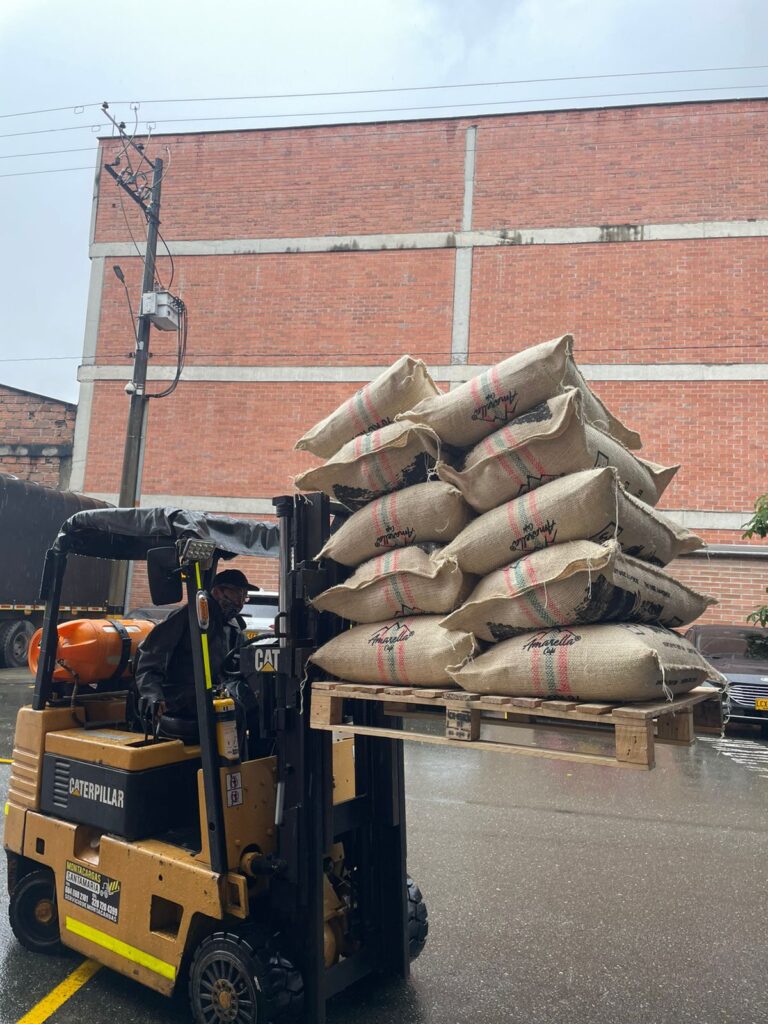
Colombian coffee has been for a long time synonymous of quality and distinction as world class, consolidating itself as one of the main export products of the country. In the year 2023, the performance of green coffee exports in Colombia has experienced several trends and challenges that are worth examining.
Colombia, known for its mountainous lands and ideal climates, remains a key player in world coffee production. The Colombian coffee industry has faced a series of challenges over the years, from climatic problems to fluctuations in international prices. Nevertheless, 2023 has been a particularly interesting year in terms of green coffee exports.
Relevant Figures and Statistics
To better understand the picture, it is essential to analyze the most recent figures and statistics. According to figures from the National Federation of Coffee Growers of Colombia (FNCC), in its annual figures report, Colombia exported a total of 8.16 million bags of 70kg bags in 2023, which, in comparison with the figures reported for 2022 (9.76 million bags), represents a reduction of 16.63%. This reduction, analyzed in terms of export values in U.S. dollars, presents a percentage variation of 22.66% compared to the 2023-2022 period. This is directly related to the volatility of international prices, the high impact on production due to the El Niño phenomenon and the exchange rate effect of foreign currency in 2023.
Climate and Sustainability Challenges
Despite the reduction in exports in terms of quantity and invoiced value, the Colombian coffee industry shows a recovery trend for the year 2024. Although climatic variations, including extreme events such as droughts and floods, have affected production in certain regions in 2023, a favorable scenario is forecast for the next crop in 2024.
Trends in International Markets
World demand for Colombian coffee continues to be strong, especially in traditional markets such as the United States and Europe. However, the growing preference for specialty coffee varieties has led to an increase in the diversification of exported products. Colombian coffee growers have responded to this demand by offering unique varieties and distinctive flavor profiles.
Innovation and Technology in Coffee Production
One of the key strategies to compensate for the export performance has been the adoption of advanced technologies in coffee production. From more efficient irrigation systems to the use of drones to monitor plantations, the Colombian coffee industry is embracing innovation to improve quality and efficiency at all stages of production.
Likewise, Colombian coffee exporting companies, such as Amarella Café SAS, have implemented innovative business models in the international supply chain scheme. This model has led more and more roasters in the U.S. and European markets to make direct purchases in Colombia, optimizing intermediation costs and facilitating access to decision-making and supply strategies in Colombia with a local partner in the process.
Direct purchasing not only generates greater economic benefits for roasters abroad. It also allows us to take a step of immersion in the coffee culture, in its tendencies and production behaviors throughout the different coffee growing zones of Colombia.
Prospects for the Colombian coffee sector in the year 2024
The outlook for green coffee exports in Colombia continues to be optimistic. However, the industry must continue to address climate challenges and look for ways to improve sustainability. Collaboration between producers, the government and international organizations will be key to guaranteeing a prosperous future for Colombian coffee in global markets.
Strengthening supply chains, understanding the behavior of the sector and developing strategies to mitigate price volatility will be the main lines of work that will enable a rebound and increase in exports by 2024.
Let us know how we can help you!
Contact us at
@Amarellacafé 2024 | Made with love by Somos Gente Digital | Data Processing Policy